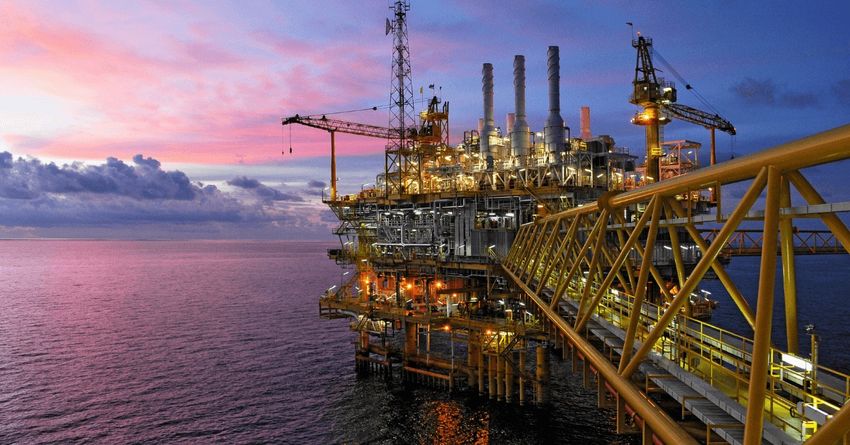Introduction
Beneath the vast oceans, billions of barrels of oil and gas are trapped in deep reservoirs. To reach these resources, offshore drilling uses massive platforms, advanced robotics, and cutting-edge engineering to extract oil from beneath the seafloor.
But how does offshore drilling work? How do we drill miles below the ocean while battling waves, pressure, and extreme weather? This article takes a deep dive into offshore drilling, exploring rig types, drilling techniques, and environmental challenges. 🚀🔬
1. What Is Offshore Drilling? The Basics of Extracting Oil at Sea 🌊⛽
Offshore drilling is the process of extracting oil and natural gas from under the ocean floor using specialized rigs and platforms.
🔹 Why Drill Offshore?
✅ Over 30% of global oil production comes from offshore fields.
✅ Some of the world’s largest oil reserves are beneath the ocean.
✅ Offshore drilling allows access to deeper, untapped reservoirs.
💡 Fact: The deepest offshore oil well, drilled in the Gulf of Mexico, reaches over 35,000 feet (10,685 meters) below the seafloor!
2. Types of Offshore Drilling Rigs & Platforms 🏗️
Different offshore environments require different rig types. Here’s how they compare:
🔹 1. Fixed Platforms (For Shallow Waters) 🏝️
✅ Built on massive steel or concrete legs attached to the seafloor.
✅ Used in shallow waters up to 1,500 feet (450 meters).
✅ Can last 50+ years in one location.
💡 Example: The Bullwinkle platform (Gulf of Mexico) is 1,736 feet tall, taller than the Empire State Building!
🔹 2. Jack-Up Rigs (For Medium Depths) ⚙️
✅ Mobile rigs that “jack up” on long legs after being floated to location.
✅ Used in water depths up to 500 feet (150 meters).
✅ More affordable than fixed platforms.
💡 Example: Jack-up rigs are common in North Sea oil fields off the coast of Norway and the UK.
🔹 3. Semi-Submersible Rigs (For Deepwater) 🌊
✅ Floating platforms held in place by anchors or dynamic positioning.
✅ Used in deepwater drilling (1,500 to 10,000 feet).
✅ More stable in harsh weather conditions than jack-ups.
💡 Example: The Deepwater Horizon (2010) was a semi-submersible rig operating at 5,000 feet depth.
🔹 4. Drillships (For Ultra-Deepwater) 🚢
✅ Large ships equipped with drilling rigs, allowing movement between sites.
✅ Used in ultra-deepwater (10,000+ feet/3,000+ meters).
✅ Steered using GPS-controlled thrusters to maintain position.
💡 Example: The Discoverer Enterprise drillship drilled at 10,685 meters (35,118 feet)—one of the deepest wells in history!
3. How Offshore Drilling Works: Step-by-Step Process 🔄
🔹 Step 1: Surveying & Choosing a Drilling Site 🔎
✅ Seismic surveys use sound waves to map oil reservoirs beneath the seafloor.
✅ Engineers study rock formations to determine the best drilling location.
💡 Example: Seismic imaging helped locate Brazil’s massive pre-salt oil fields deep under the Atlantic.
🔹 Step 2: Setting Up the Rig & Drilling the Well 🛠️
✅ The drilling rig positions over the chosen site.
✅ A conductor pipe is placed to stabilize the well.
✅ The drill bit is lowered, rotating at high speed to penetrate rock layers.
💡 Fact: Offshore drill bits spin at 200+ RPM, cutting through solid rock formations!
🔹 Step 3: Using Drilling Mud to Cool & Control Pressure 🌊
✅ Drilling mud (a mix of water, clay, and chemicals) is pumped into the well.
✅ Helps cool the drill bit, remove rock cuttings, and prevent blowouts.
💡 Fun Fact: Some rigs use synthetic biodegradable drilling fluids to reduce ocean pollution risks.
🔹 Step 4: Installing Casing & Blowout Preventers (Safety First) 🚨
✅ Steel casing is inserted to prevent the well from collapsing.
✅ Blowout preventers (BOPs) are installed to seal the well in case of pressure surges.
💡 Lesson from History: After the Deepwater Horizon disaster (2010), stronger blowout preventers became mandatory.
🔹 Step 5: Extracting Oil & Gas 🛢️
✅ If oil is found, tubing is installed for extraction.
✅ Oil flows naturally or is pumped to the surface.
💡 Example: Some deepwater oil reservoirs use gas injection to increase oil recovery.
🔹 Step 6: Transporting Oil & Gas 🚢
✅ Oil is moved via:
- Pipelines (Underwater or to shore).
- Tanker ships (For remote locations).
💡 Fact: The longest undersea pipeline, the Nord Stream Pipeline, spans 1,222 km (759 miles)!
4. Challenges & Risks of Offshore Drilling 🚧
🔹 1. Oil Spills & Environmental Damage 🌊🛢️
❌ Blowouts or leaks can cause massive oil spills.
✅ Solution: Advanced oil spill response systems & AI-powered monitoring.
💡 Example: The Deepwater Horizon spill (2010) leaked 4.9 million barrels, causing severe marine damage.
🔹 2. Harsh Weather & Hurricanes 🌪️
❌ Rigs face extreme storms, high waves, and freezing conditions.
✅ Solution: Some rigs can detach and move to avoid hurricanes.
💡 Example: Arctic oil rigs are designed with ice-resistant materials to withstand freezing temperatures.
🔹 3. High Costs & Technical Challenges 💰
❌ Deepwater drilling is expensive, costing up to $500 million per well.
✅ Solution: AI & automation reduce costs and improve efficiency.
💡 Future Trend: Some companies are testing autonomous deep-sea drilling robots!
5. The Future of Offshore Drilling: Smarter, Safer, & Greener 🌱
✅ AI & Machine Learning – Predicts drilling efficiency and prevents accidents.
✅ Carbon Capture & Storage (CCS) – Injecting CO₂ into old oil fields to reduce emissions.
✅ Renewable Energy Integration – Offshore oil platforms are now co-powered by wind & solar energy.
💡 Example: Norway’s Johan Sverdrup Oil Field is powered by 100% renewable hydroelectricity, reducing CO₂ emissions by 80%!
Conclusion 🏁
Offshore drilling is one of the most technologically advanced industries, allowing oil extraction from deep beneath the ocean. While it poses environmental risks, modern innovations are making it safer, cleaner, and more efficient.
🌍 The future of offshore drilling will combine AI, automation, and renewable energy to create a more sustainable energy industry. 🚀⚡


